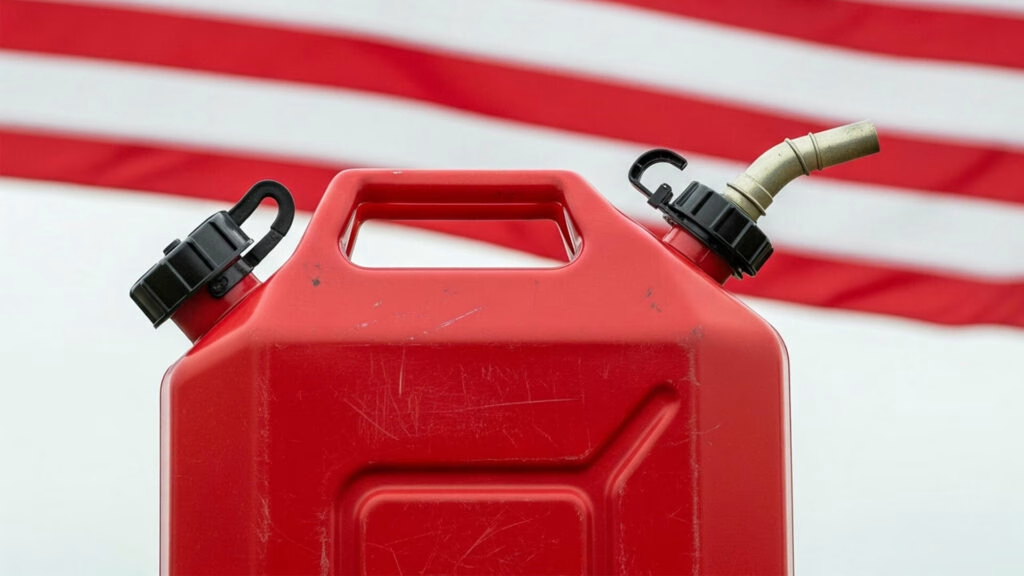Why Did Gas Cans Get So Complicated in the First Place?
If you’ve ever tried to pour gas from a modern can and ended up muttering under your breath, you’re not alone. Gas cans used to be a breeze—twist off the cap, pop on the spout, and you were good to go. But over the past two decades, what was once a simple tool has turned into a source of frustration for many. So, what happened?
It all started back in 2007, when the Environmental Protection Agency (EPA) introduced regulations to clamp down on evaporative emissions. The goal was to keep harmful gasoline vapors from escaping into the atmosphere, which sounds great on paper. But the unintended consequence? Manufacturers removed vents from gas cans, which slowed the flow to a trickle. Suddenly, filling up a lawn mower or generator became a test of patience.
Then, in 2008, Congress passed the Children’s Gasoline Burn Prevention Act. This law required child-resistant locks on gas cans, similar to those on prescription bottles. While safety is paramount, the new designs often left users fumbling with stiff, awkward nozzles—sometimes breaking them in the process.
The complexity didn’t stop there. In 2022, the Portable Fuel Container Safety Act mandated flame mitigation devices to prevent flashback ignition. Again, safety first, but each new rule made the humble gas can a little more complicated and, frankly, a lot more annoying.
Are There Any Real Benefits to All These Regulations?
It’s easy to grumble about slow pours and tricky locks, but these regulations weren’t just bureaucratic red tape. The EPA’s emission standards have helped reduce air pollution from gasoline vapors, which contribute to smog and can harm respiratory health. According to the EPA, these changes have prevented thousands of tons of volatile organic compounds from entering the atmosphere each year.
The child safety features, while sometimes clunky, have made a measurable difference too. The Consumer Product Safety Commission reported a significant drop in gasoline-related burn injuries among children since the 2008 law took effect. And flame mitigation devices, though a recent addition, are designed to prevent rare but catastrophic flashback explosions.
So yes, the changes have made gas cans safer and better for the environment. The problem is, they’ve also made them a pain to use.
Why Is the EPA Pushing for Vented Gas Cans Now?
After years of consumer complaints—think slow pours, spilled fuel, and broken nozzles—the EPA is finally nudging manufacturers to make gas cans more user-friendly. The agency recently sent letters to gas can makers, encouraging them to add self-closing vents. The idea is simple: a vent allows air in as fuel flows out, making the pour smoother and faster, without compromising on emissions or safety.
EPA Administrator Lee Zeldin summed it up: Americans deserve gas cans that are both compliant and effective. The hope is that new designs will strike a better balance between safety, environmental protection, and everyday usability.
What Should I Know About Storing Gasoline Safely?
Even with the best-designed can, storing gasoline comes with risks. Fire codes in most places limit you to 25 gallons of fuel, divided among containers that each hold less than five gallons. And not just any container will do—approved, leak-proof cans are a must.
Experts recommend keeping gas cans in a cool, well-ventilated area, away from direct sunlight and ignition sources. Never store them inside your home or near appliances like water heaters. And always label your cans clearly—mistaking gasoline for something else is a recipe for disaster.
A quick tip from fire safety pros: check your cans regularly for cracks or leaks, and replace them if you spot any damage. Old, brittle plastic can fail when you least expect it.
Are There Any Workarounds for Frustrating Gas Can Designs?
If you’re stuck with a hard-to-use can, you’re not powerless. Some folks have found relief by adding aftermarket vent kits (where legal), which can improve flow. Others swear by slow, steady pours and keeping the spout as level as possible. It’s not perfect, but it helps.
That said, with the EPA’s latest push, expect to see more vented, user-friendly cans hitting the shelves soon. If you’re in the market for a new one, look for models with clear instructions, sturdy construction, and—ideally—a vented design.
What’s the Bottom Line for Everyday Users?
The saga of the gas can is a classic case of good intentions meeting real-world headaches. Regulations have made these containers safer and greener, but at the cost of convenience. The good news? Change is (finally) on the horizon, with the EPA encouraging manufacturers to bring back vents and improve usability.
The big takeaway? Getting the right gas can isn’t about perfection—it’s about smarter adjustments. Start with one change this week, and you’ll likely spot the difference by month’s end.

